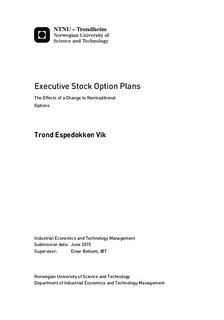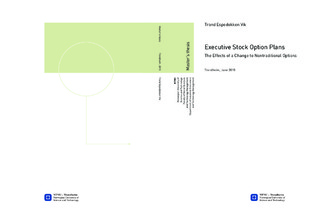| dc.description.abstract | In order to study the value and incentive effects of indexed, Asian and indexed Asian options in practice I use hand-collected compensation and assumption data to give a realistic representation of how the nontraditional options would differ from the standard at-the-money option without adjustments. The paper implements the data into an analysis of incentives and accumulated value of the options on a sample of the largest S&P 500 companies that issued executive stock options from 2010 to 2014.
The paper employs Delta and Vega to compare the incentives created by the options, and find that the benefits from indexing are typically small. The options linked to average stock price, Asian and indexed Asian options, provide consistently higher incentives to increase stock price, but provide fewer incentives to increase volatility. Compared to earlier research, the differences in incentives created by the four options are smaller. This is mainly due to the low risk-free rates in the sample period, which reduces the number of nontraditional options that can be granted at equal cost. To analyze how the value of options change over time, the paper employs a new way of measuring the value over time, combining the value of realized and unrealized options. The results show that the traditional and Asian options provide significantly higher compensation than their indexed counterparts over the bullish sample period. The findings have important consequences for the viability of the nontraditional options, and might help explain the near uniform use of the standard at-the-money option in practice. | |

